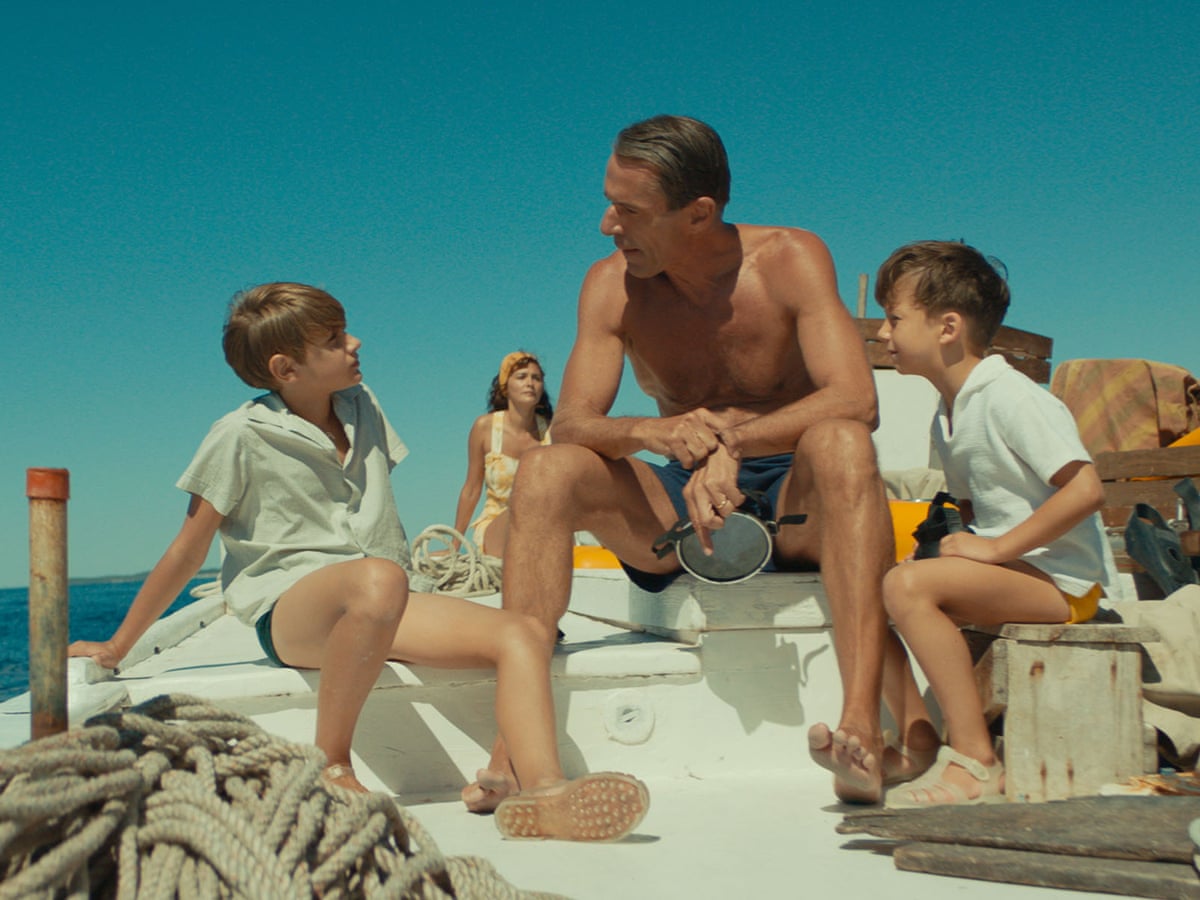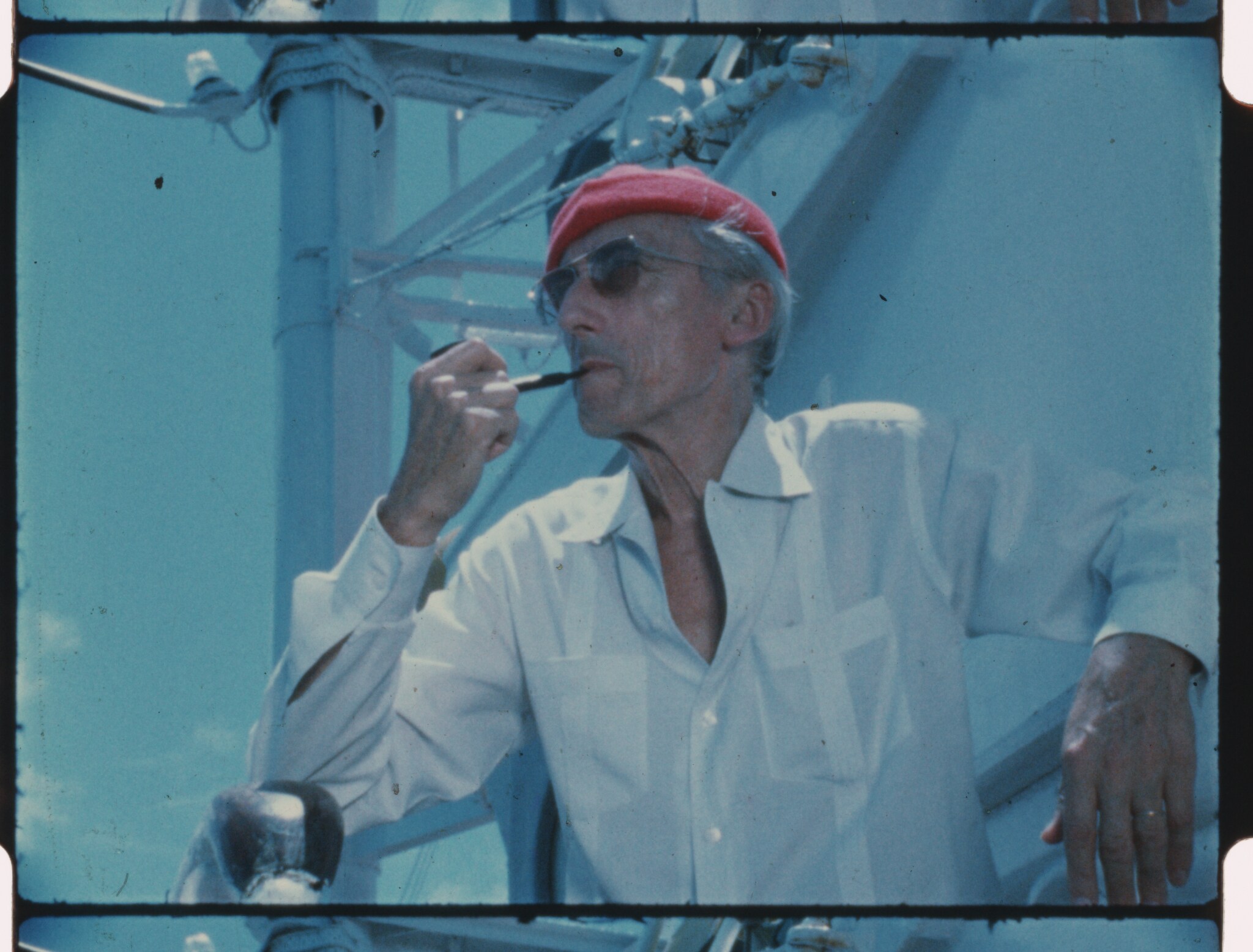“The only field in which I know I am gifted is cinema,” writes Jacques-Yves Cousteau, a man more remembered for his technological innovations, scientific discoveries, and charming personage than for the dozens of films and television specials that he directed. The documentary Becoming Cousteau revises the conception of the deep-sea explorer in the popular imagination, portraying him as he truly was: a complicated and multifaceted man whose passion for the sea was vital in establishing many of our modern-day environmental movements. Directed by American documentary filmmaker Liz Garbus, and produced by National Geographic, Becoming Cousteau uses a variety of multimedia sources to weave together a holistic portrait of Cousteau’s life and legacy. The film is a visual treat for anyone with an interest in marine life, and it is sure to impart upon audiences the urgency of environmentalism and ecological conversation.

The majority of the documentary’s visuals come from color footage of films and TV series, which spanned from the 1950s to the early 80s, which show both life underwater as well as life on board Cousteau’s research vessel. The vintage charm of these clips is only heightened by the whimsical French score and recurrent image of Cousteau in his trademark red beanie. The documentary also utilizes black-and-white film, still photographs, and diagrams of Cousteau’s various inventions. French actor Vincent Cassel reads from Cousteau’s diary and provides valuable insights into the explorer’s mind. The doc is interspersed with interviews conducted exclusively for the film, as well as older television interviews in which the audience may hear from Cousteau directly. Becoming Cousteau also contains previously unseen footage that Garbus worked with The Cousteau Society to obtain. Perhaps the most moving of these moments is the burial-at-sea of Cousteau’s second son, Philippe, who died in a private plane accident in 1979.

Garbus skips the childhood details that would typically be found in a biographical documentary, and she instead heads straight to the beginning of her subject’s immense career. Cousteau discovered his love for diving in his early 20s, when a brutal automobile accident left him with 12 broken bones and cut short his promising career as a navy pilot. His doctors recommended that he take to the water as a form of physical therapy, and he began diving and spearfishing off the Mediterranean coast. Cousteau immediately fell in love with the underwater world. “Diving is the most fabulous distraction you can experience,” Cassel’s voiceover says. “I am miserable out of the water. It is as if you’ve been introduced to Heaven, and then forced back to Earth.” His first wife, Simone, felt a similarly strong longing for life at sea, and they raised two sons in an unconventional environment that allowed for plenty of time on (or in) the water.

Years of amateur diving along the French Riviera led to Cousteau’s 1943 invention of the Aqua-Lung, a system that allowed divers to breathe underwater through an oxygen tube strapped to their backs–essentially the equivalent of the modern SCUBA. Diving had been possible before the Aqua-Lung, but divers received their oxygen through a large cable that was connected to the surface. Cousteau’s invention allowed for much more freedom of movement. In light of the war, Cousteau and his team realized the immense potential of the Aqua-Lung and offered its services to the US Navy, who contracted a team of divers to recover bodies from shipwrecks and plane wrecks.

With the money from this work, Cousteau was able purchase his research vessel Calypso, a converted WWII minesweeper on which he traveled around the world for the next forty-five years. After the Navy money ran out, Cousteau financed his increasingly expensive diving expeditions by working with British Petroleum to find oil off the coast of Abu Dhabi. Although he is credited with directly leading to the immense wealth of that emirate, later in life Cousteau regretted his cooperation with the petroleum industry, lamenting that, at the time of his involvement, no one knew just how environmentally destructive oil extraction would be.

In the 1960s and 70s, Cousteau began to notice a large change in the environment of his beloved Mediterranean–the seafloor was quickly becoming a wasteland. In 1973, he established the Cousteau Society for the Protection of Ocean Life, which was one of the first mainstream environmental groups. Being deeply worried for future generations, Cousteau began to involve himself in environmental politics in his older years, and he was instrumental in passing an international 50-year ban on oil extraction in Antarctica. As the documentary shifts its focus from the novelty of Cousteau’s underwater exploration to environmental degradation, it loses some of its earlier lightheartedness. But it’s hard to remain too pessimistic while viewing Cousteau’s indomitable spirit fighting for the protection of our beautiful natural world. And although Cousteau passed away in 1997, the film leaves us with a sense of urgency, and the sense that, even though companies will continue to pollute our environment, our younger generation has the capacity to change that.

Becoming Cousteau could very well be an Oscar contender for Best Documentary Feature, along with fellow National Geographic film The Rescue. Regardless of the praise that it is certain to receive, Becoming Cousteau is a wonderfully informative and heartwarming film that is one of this fall’s must-see new films.
Becoming Cousteau will be released in theaters nationwide on Friday 22 October.
4/5 STARS
